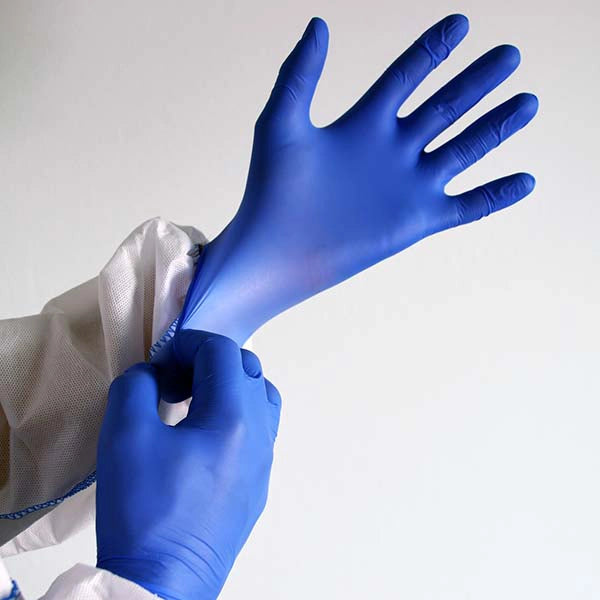Poor management of waste can have adverse effects on workers, patients, waste handlers, the larger community, and the whole environment. They can significantly pollute the environment, cause infections and injuries. It is paramount for all medical wastes to be segregated immediately and handled for proper disposal.
Each year approximately 16 billion injections are administered worldwide, and not all syringes and needles are appropriately disposed of after use. Health facilities produce tons of waste daily. For instance, in the United States, the health care sector generates over 7000 tons of medical waste daily. One patient may produce up to 25 pounds of waste.
Types Of Medical Waste
Medical wastes refer to any waste that is a by-product of healthcare activity. These include surgeries, dentist service providers, laboratories, and hospitals. These wastes include material or substances that may come into contact with the body during research, diagnosis, treatment, and drug administration.
There are different types of medical wastes and can be grouped depending on materials and waste disposal methods.
Generally, there are four broad categories of medical wastes: general waste, infectious wastes, hazardous wastes, and radioactive wastes.
General Waste
General waste includes non-hazardous waste produced in medical facilities. This type of waste is similar to regular household waste and includes items such as paper, plastic packaging, and food waste. It does not pose a significant risk to human health or the environment.
Infectious Waste
Infectious waste consists of materials that may contain pathogens and pose a risk of infection. This includes waste from surgeries, cultures and stocks of infectious agents, waste from isolation wards, tissues, and other body parts. Proper handling and disposal are crucial to prevent the spread of infections.
Hazardous Waste
Hazardous waste includes waste that is chemically hazardous, toxic, corrosive, or reactive. Examples include chemical solvents, disinfectants, and heavy metals. These wastes require special handling and disposal methods to prevent harm to human health and the environment.
Radioactive Waste
Radioactive waste comprises waste materials that contain radioactive substances. This type of waste is generated from diagnostic and therapeutic procedures involving radioactive isotopes. It requires stringent regulatory control and specialized disposal techniques to ensure safety from radiation exposure.
How to Deal With Medical Waste
The different medical wastes generated from various sources require different disposal and management methods. Some health centers prefer assigning contracts to organizations or firms with reputable waste management expertise.
- Follow the waste disposal regulations: There are laid down regulations established by WHO or Environment Protection Agency (EPA) and other federal and state guidelines. There is a need to separate waste at the source for easier handling and disposal. For example, solid non-risky shredded paper should not be disposed of at the same point with used needles or expired pills.
- Staff workshops: Even though waste disposal regulations are vital, they might not take the facility to the required levels to handle the waste. It’s essential to invest in employees to learn the latest waste handling requirement. Seminars can keep workers updated on the new trends, and therefore they should be emphasized from time to time.
- Observe your state’s medical waste management rules: different States have different waste management regulations. For example, in some states, there are no restrictions on the period you can keep in the facilities the unwanted medical products before disposal. In others, there are well-laid procedures on time and waste disposal. Always check and get updated with your state's requirements.
- Introduce color-coded containers to encourage waste sorting: Understanding the types of waste will help sort and dispose of them properly. The most effective time to sort your waste is at the disposal stage. Anything done after disposal would only increase the chances of contamination, wrong treatment, and control. Color-coding is a wise idea because it will ease the sorting process. By mastering the colors, the personnel involved can determine what waste belongs and identify the most effective treatment method.
Therefore, the generated waste will determine how it will be sorted, disposed of, and treated. For instance, plastic bags are sufficient for most wastes, while radioactive-related waste must always be stored with lead containers due to their reactive nature.
- Use recyclable products instead of expendable alternatives: it’s estimated that 33% of waste generated from a typical hospital is plastic residue. The majority of these containers are single-time use and disposed of. While it’s expensive to purchase them, the cost of disposal is also not very friendly. When you can, it’s important you consider the harmless and recyclable alternatives. Additionally, some disposal boxes and medical accessories can also be sterilized and reused without risking the health of your staff.
- Employ signage to direct what goes where: you have color-coded your containers, but still, some people, especially the sick and aged, may not properly identify what type of waste should go to what container. Employing visually based reminders and hints around the medical waste boxes can serve a great deal to help them operate within your facilities’ set policies. You can also place signs on the containers and help reduce the chances of dispose-errors.
- Strategic positioning of the waste bins: Naturally, human beings would drop waste at convenience. Make sure that you take note while placing and positioning your collection bins. Portable or small waste bins can be placed near the patient’s bed. The proximity would motivate both the sick and staff to dispose of medical litter quickly. Larger waste bins encourage staff and clients to utilize them as normal trash containers for regular public waste. It’s advisable that the accessibility to medical waste bins be limited to staff only.
- Manage pharmaceuticals and chemotherapy drugs attentively: wastes in this class are primarily toxic. Disposing of such waste demands the presence of an authorized medical waste conveyor to ferry and dispose of. The waste also requires to be categorized in diverse and separate bins from other sorts of waste. This category comprises IV bags, gowns, tubing, and hand gloves that are likely to have had risky contamination from chemotherapy. Traditionally, yellow is the primary color for boxes used before elimination. If you handle such waste in your facility, you must familiarize your workers with such contamination, how to sort and dispose of it. Slight mistakes can lead to dire consequences.
- Conduct timely waste audits: Having a practical working system is an excellent step. But periodically checking its effectiveness is worth everything. Plan impromptu inspection on the healthcare waste disposal operations and ensure compliance. If you identify blind spots or areas that need stepping up, communicate with your staff and put the process in order. If retraining is required, don’t hesitate to organize a refresher class. Are your employees performing as expected? It goes without saying: cheer them up with an appreciation.
Prudent management of waste is essential for each healthcare facility. When rightly put in place, the waste management plan can significantly lower the environmentally caused effects, expenses on disposal, and the facility’s operating costs. Ensure your Firm goes beyond the compliance regulations and be at peace. Finally, the facility, employees, and patients are the first beneficiaries of proper waste management.
Incineration of Medical Waste
Incineration transforms waste into organic matter and reduces its weight and volume, besides rendering them harmless. It is a thermal process, and the primary aim is to eliminate pathogens.
Certain medical wastes such as chemical wastes and pharmaceuticals require higher temperatures than ordinary incinerators to destroy wastes. The most reliable technology is pyrolytic incineration with gas cleaning equipment. It's a double chamber consisting of a post-combustion chamber and a pyrolytic chamber. In the pyrolytic chamber, the wastes are exposed to a combustion process with deficient oxygen and medium temperatures of between 800-900oC to produce gases and solid ashes.
In the post-combustion chamber, the produced gases and ashes are exposed to higher temperatures between 900-1200oC, where fuel and excess air are used.
Other Alternatives of Medical Waste Disposal
Besides incineration, medical wastes can be disposed of using the following processes.
- Autoclaving is a form of steam sterilization
- Microwaving thermal treatment
- Chemical mechanical treatment systems
- Electrolysis
What Are the Sources of Medical Waste?
Medical waste is not only a product of hospitals. There are other sources of medical wastes, and they include the following:
- Infirmaries and health facilities
- Laboratories and healthcare research centers
- Morgues and autopsy centers
- Blood banks and transfusion centers
- Nursing and care homes for the elderly
- farm pet research and examination facilities
Consequences of Improper Management of Medical Wastes
- They can result in injuries from needles and other sharp objects. For example, over three hundred thousand sharp objects-related cases are registered yearly.
- Infections from contaminated items. Globally, medical centers report over 1.7 million infections of hepatitis B. These infections are transmitted through contact with unsterilized clinical needles.
- Lethal and toxic exposure to dangerous pharmacological substances such as cytotoxic drugs, dioxin, and heavy metals likes mercury.
- TOxic chemical effluents into the environment while disposing of the used substances.
- Pollution of the air by the solid or liquid products when burning medical trash.
- Radiations
Risks Posed by Medical Wastes
All medical wastes pose a serious health risk to all people. Some wastes create an opportunity for reuse leading to infections. In 2010, there were 33,800 new infections of HIV as a result of unsafe injections and thousands of other infections such as hepatitis.
Handling or touching hazardous materials can affect one’s health. Those who handle waste are at higher risks of needle injuries and other toxic materials. In 2015, WHO and UNICEF found that half of the sampled health facilities in 24 countries worldwide, only about 58% had enough capacity for safe disposal of health care wastes.
Effects of Medical Waste on the Environment
Disposal and treatment of healthcare waste can potentially pose a health risk if they release pollutants and pathogens into the environment.
- Untreated wastes in landfills can contaminate surface and groundwater and pollute drinking water.
- Disinfectants used in treating medical wastes can potentially release harmful chemical substances to the environment if they are not handled and disposed of in the proper manner.
- Incineration is one of the efficient ways that has been used for a long time. However, incineration of unsuitable materials or improper incineration can generate more pollutants into the environment. For instance, materials having chlorine can release carcinogenic substances such as furans and dioxins if they are incinerated. Similarly, materials containing heavy metals like cadmium, mercury, and lead can adversely affect the environment.
Are Surgical Gloves Medical Waste?
Yes, surgical gloves are considered medical waste. Once used, they can be contaminated with blood, bodily fluids, or other potentially infectious materials, classifying them as infectious waste. Proper disposal of surgical gloves is essential to prevent the spread of infection and ensure the safety of healthcare workers and patients. Used gloves should be disposed of in designated medical waste containers and treated according to local regulations for medical waste management.
Learn more about Types of Surgical Gloves
Improper disposal of surgical gloves can pose significant health risks, including the transmission of infectious diseases and environmental contamination. It is crucial that healthcare facilities implement strict protocols for the disposal of used gloves, including training staff on proper disposal techniques and ensuring that waste is handled by licensed medical waste management services. By adhering to these practices, healthcare providers can help maintain a safe and hygienic environment for both patients and medical personnel.
Management of Medical Waste: Frequently Asked Questions
What is the most common treatment method for medical waste?
The most common treatment method for medical waste is incineration. This process involves burning medical waste at high temperatures to reduce its volume and destroy pathogens. Incineration is effective for a wide range of medical wastes, including infectious and hazardous materials, and ensures that dangerous microorganisms are eliminated.
Which method is best for waste management?
The best method for waste management often depends on the type of waste being handled. However, autoclaving is widely regarded as a superior method for treating infectious waste. This process uses steam and high pressure to sterilize waste, effectively killing pathogens without producing harmful emissions. For hazardous and chemical wastes, specialized treatment and disposal methods are necessary to ensure safety and compliance with environmental regulations.
How to manage biomedical waste?
Managing biomedical waste involves segregating it into categories, collecting and storing it in appropriate containers, securely transporting it, treating it with methods like incineration or autoclaving, and finally disposing of it according to local regulations, all while ensuring healthcare personnel are properly trained.
References
CDC. (2003). Medical Waste | Background | Environmental Guidelines | Guidelines Library | Infection Control | CDC. Centers for Disease Control and Prevention. https://www.cdc.gov/infectioncontrol/guidelines/environmental/background/medical-waste.html
Department of Toxic Substances (DTSC). (n.d.). Managing Hazardous Waste. DTSC. Retrieved April 5, 2021, from https://dtsc.ca.gov/generators/
Environmental Compliance Assistance Platform (EnvCAP). (n.d.). Regulated Medical Waste. Environmental Compliance Assistance Platform. Retrieved April 6, 2021, from https://www.envcap.org/srl/rmw/ca-rmw.html
Environmental Health and Safety. (n.d.). Medical Waste | Environmental Health & Safety. Retrieved April 6, 2021, from https://www.ehs.ucsb.edu/biosafety/medical-wasteEPA. (n.d.). Model Guidelines for State Medical Waste Management. Retrieved April 5, 2021, from https://www.epa.gov/sites/production/files/2016-02/documents/model_guidelines_for_state_medical_waste_management.pdf
EPA. (2021a, February 5). Links to Hazardous Waste Programs and U.S. State Environmental Agencies. US EPA. https://www.epa.gov/hwgenerators/links-hazardous-waste-programs-and-us-state-environmental-agencies
EPA. (2021b, March 29). Medical Waste. US EPA. https://www.epa.gov/rcra/medical-waste
Padmanabhan, K., & Barik, D. (2018, November 9). Health Hazards of Medical Waste and its Disposal. PubMed Central (PMC).
https://www.ncbi.nlm.nih.gov/pmc/articles/PMC7152398/
TCEQ. (2016, August). Texas Regulations on Medical Waste. Texas Regulations on Medical Waste.
https://www.tceq.texas.gov/assets/public/comm_exec/pubs/rg/rg-001.pdf/
Thomson Reuters. (n.d.). California Code of Regulations. Thomson Reuters Westlaw. Retrieved April 5, 2021, from https://govt.westlaw.com/calregs/Document/I1E6300709C2211DF9483EFDBF75312D5?viewType=FullText&originationContext=documenttoc&transitionType=CategoryPageItem&contextData=(sc.Default)
WHO. (n.d.). Handling, storage, and transportation of health-care waste. World Health Organization. Retrieved April 6, 2021, from https://www.who.int/water_sanitation_health/medicalwaste/061to076.pdf/
WHO. (2018, February 8). Health-care waste. World Health Organization. https://www.who.int/news-room/fact-sheets/detail/health-care-waste




